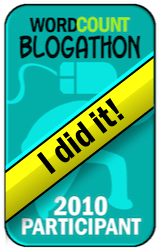Six lessons from the CFA Institute’s conference tweets
 You can learn some lessons for how to tweet a conference from the CFA Institute. It has done things right as it timed its Twitter debut to coincide with its annual conference. But there’s still room for improvement.
You can learn some lessons for how to tweet a conference from the CFA Institute. It has done things right as it timed its Twitter debut to coincide with its annual conference. But there’s still room for improvement.
Lesson 1: Deploy a team. The CFA Institute mobilized a team of 14 people to report on its three-day conference. One person will burn out if she or he tries to cover every session. Plus, it’s impossible for one person to cover concurrent sessions.
Lesson 2: Use a hashtag. The hashtag #CFA2010 allowed people to find conference tweets by both official and unofficial sources.
Lesson 3: Complement your tweets with blog posts. You can’t say much of substance in a line of 140 characters or less. You’ll engage your conference attendees more deeply when some of your tweets lead them to blog posts. Tweets may be the sizzle that leads some reader to the steak. Read the CFA Institute’s 2010 conference blog.
Lesson 4: Decide on a strategy for engaging with fellow Twitter users. The CFA Institute included non-staff #CFA2010 tweets in the Twitter feed. It might also have engaged with other people tweeting about the conference.
I may have overlooked something, but I didn’t see any CFA Institute Twitter users getting into conversations on Twitter. On the other hand, there aren’t many CFA charterholders on–or even knowledgeable about–Twitter. “You can tweet, although I don’t know what that means,” joked John Rogers, the CFA Institute’s President and CEO, to widespread laughter when he introduced the conference’s Monday morning sessions.
Lesson 5: Monitor the back channel. This isn’t an issue for the CFA Institute yet, but it’s becoming more of an issue, as reflected in the publication of The Back Channel: How Audiences Are Using Twitter and Social Media and Changing Presentations Forever by Cliff Atkinson. The CFA Institute kept its eyes on the back channel by featuring #CFA2010 tweets on its conference blog and on screens at the conference.
Lesson 6: Go multimedia. Some folks like to take in their information in written form. Others prefer audio and video. The CFA Institute did a great job of getting its headline speakers interviewed on camera by reporters and tweeting the interviews as they became available online. It has also gradually fed the interviews onto its blog.
Congratulations CFA Institute on a conference well-tweeted!
Related posts:
* My blog posts related to #CFA2010
____________________
Receive a free 32-page e-book with client communications tips when you sign up for my free monthly newsletter.









